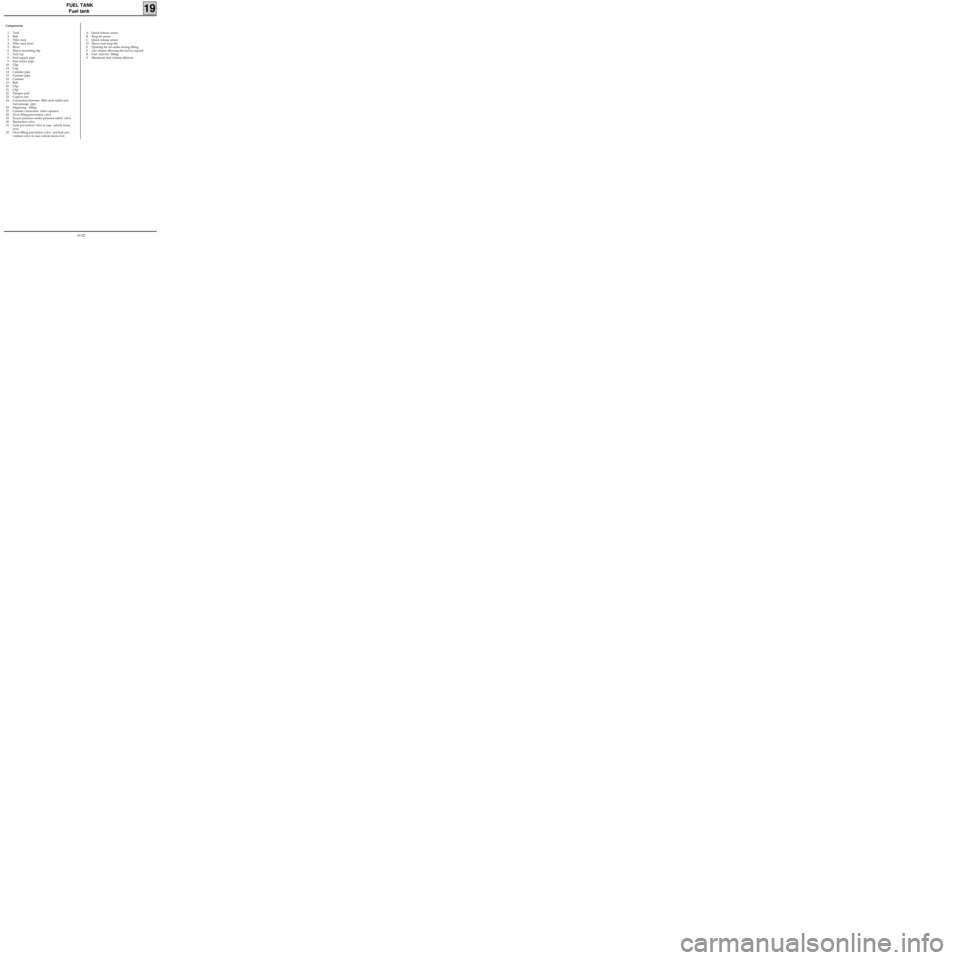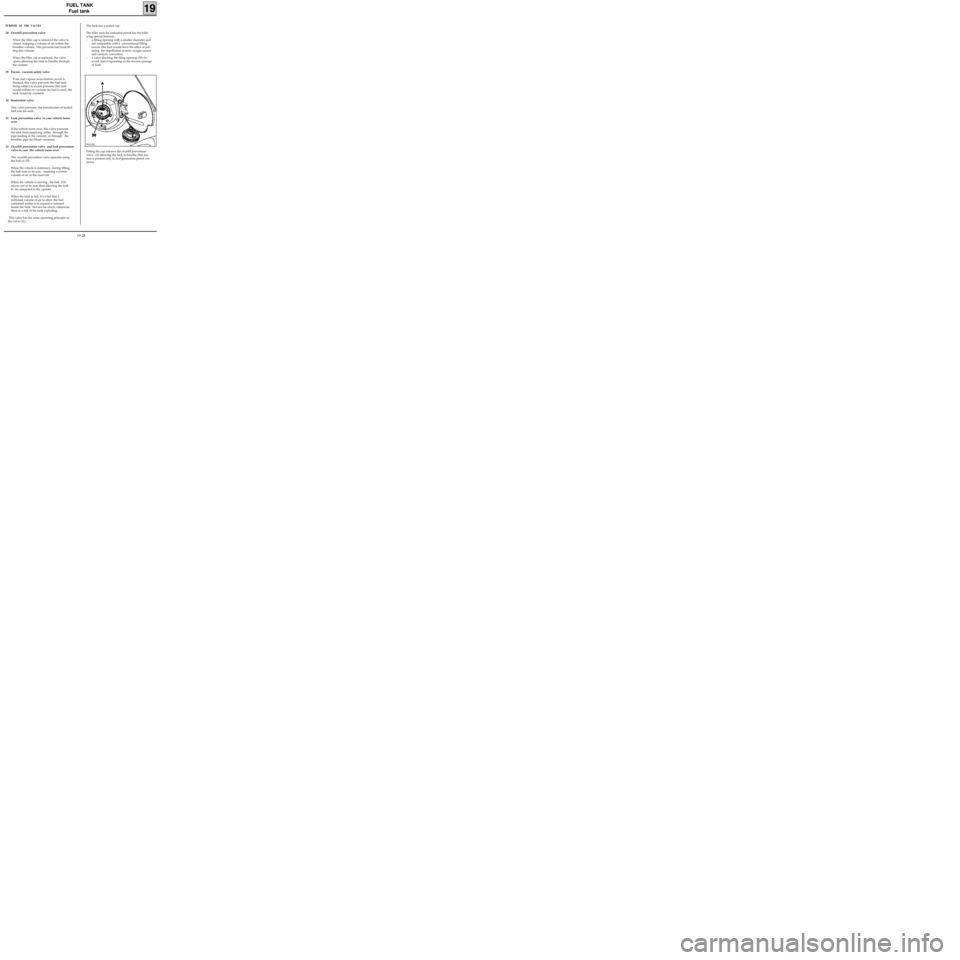fuel cap release RENAULT KANGOO 1997 KC / 1.G Engine And Peripherals Workshop Manual
[x] Cancel search | Manufacturer: RENAULT, Model Year: 1997, Model line: KANGOO, Model: RENAULT KANGOO 1997 KC / 1.GPages: 208
Page 201 of 208

FUEL TANK
Fuel tank
19
Components
1 Tank
2 Bolt
3 Filler neck
4 Filler neck bowl
5 Rivet
6 Sleeve mounting clip
7 Fuel cap
8 Fuel supply pipe
9 Fuel return pipe
10 Clip
13 Cup
14 Canister pipe
15 Canister pipe
18 Canister
19 Bolt
20 Clip
21 Clip
22 Damper pad
23 Captive nut
24 Connection between filler neck outlet and
fuel passage pipe
25 Degassing - filling
27 Canister connection (fuel vapours)
28 Over-filling prevention valve
29 Excess pressure-under-pressure safety valve
30 Restriction valve
31 Leak prevention valve in case vehicle turns
over
32 Over-filling prevention valve and leak pre-
vention valve in case vehicle turns over.
A Quick-release union
B Snap-fit union
C Quick release union
D Sleeve (not snap-fit)
E Opening for air outlet during filling
F Air volume allowing the fuel to expand
R Fuel inlet for filling
V Maximum fuel volume allowed.
19-27
Page 202 of 208

FUEL TANK
Fuel tank
19
PURPOSE OF THE VALVES
28 Overfill prevention valve
When the filler cap is removed the valve is
closed, trapping a volume of air within the
breather volume. This prevents fuel from fil-
ling this volume.
When the filler cap is replaced, the valve
opens allowing the tank to breathe through
the canister
29 Excess - vacuum safety valve
If the fuel vapour recirculation circuit is
blocked, this valve prevents the fuel tank
being subject to excess pressure (the tank
would inflate) or vacuum (as fuel is used, the
tank would be crushed).
30 Restriction valve
This valve prevents the introduction of leaded
fuel into the tank.
31 Leak prevention valve in case vehicle turns
over
If the vehicle turns over, this valve prevents
the tank from emptying, either through the
pipe leading to the canister, or through the
breather pipe (in Diesel versions).
32 Overfill prevention valve and leak prevention
valve in case the vehicle turns over
The overfill prevention valve operates using
the ball at (33).
When the vehicle is stationary, during filling,
the ball rests in its seat, retaining a certain
volume of air in the reservoir .
When the vehicle is moving , the ball (33)
moves out of its seat, thus allowing the tank
to be connected to the canister.
When the tank is full, it is vital that a
sufficient volume of air to allow the fuel
contained within it to expand is retained
inside the tank, but not too much, otherwise
there is a risk of the tank exploding .
This valve has the same operating principle as
the valve (31) .
The tank has a sealed cap.
The filler neck for unleaded petrol has the follo-
wing special features :
- a filling opening with a smaller diameter and
not compatible with a conventional filling
nozzle (the lead would have the effect of pol-
luting the depollution system: oxygen sensor
and catalytic converter),
- a valve blocking the filing opening (30) (to
avoid fuel evaporating or the reverse passage
of fuel).
Fitting the cap releases the overfill prevention
valve (A) allowing the tank to breathe (this fea-
ture is present only in first generation petrol ver-
sions).
99212R2
19-28